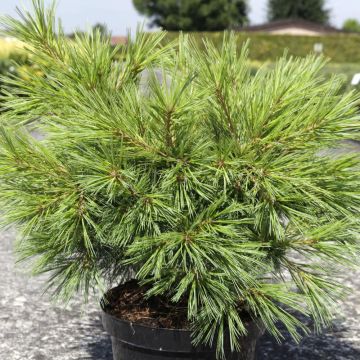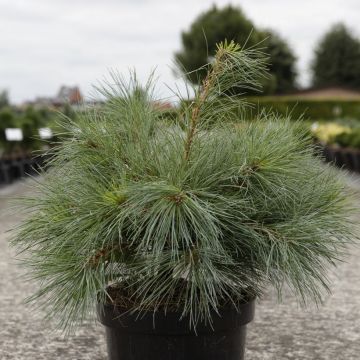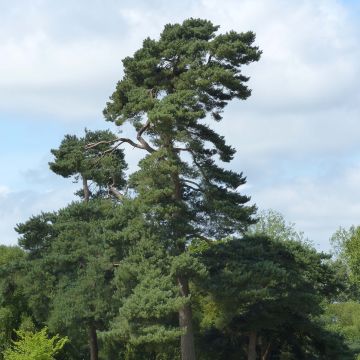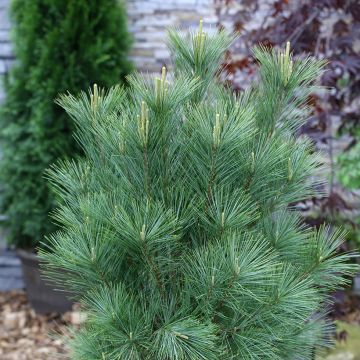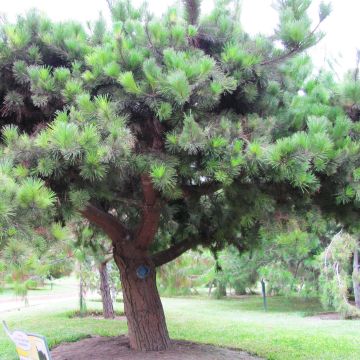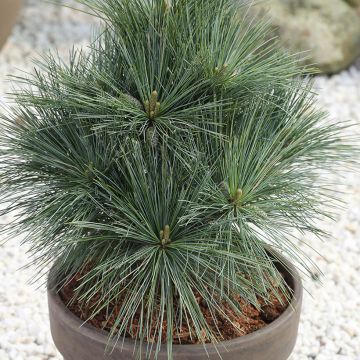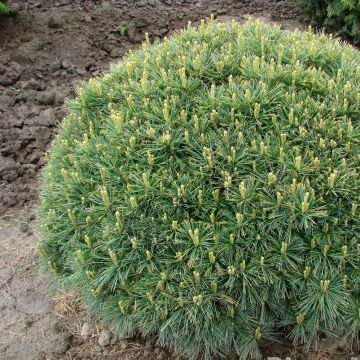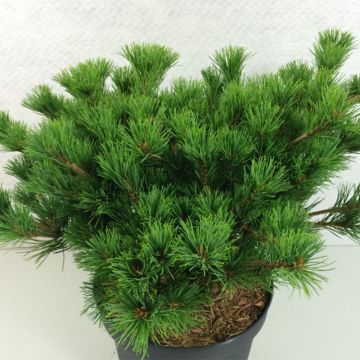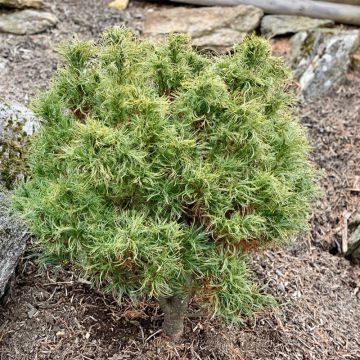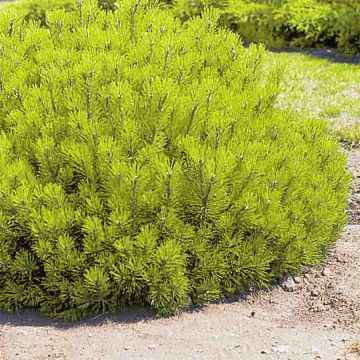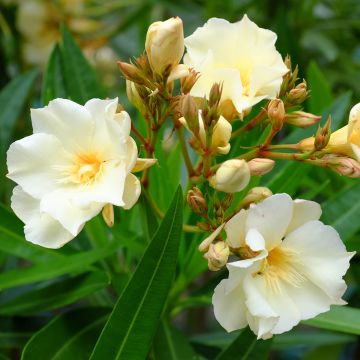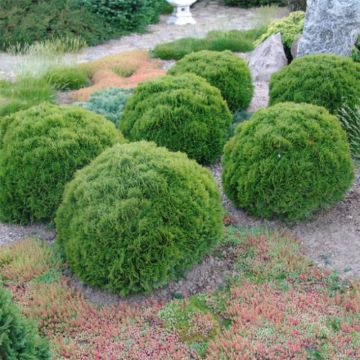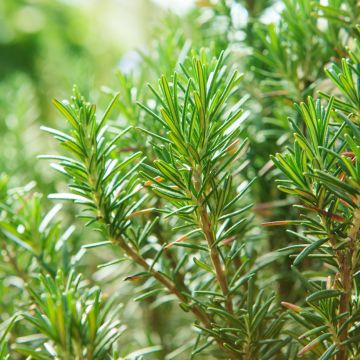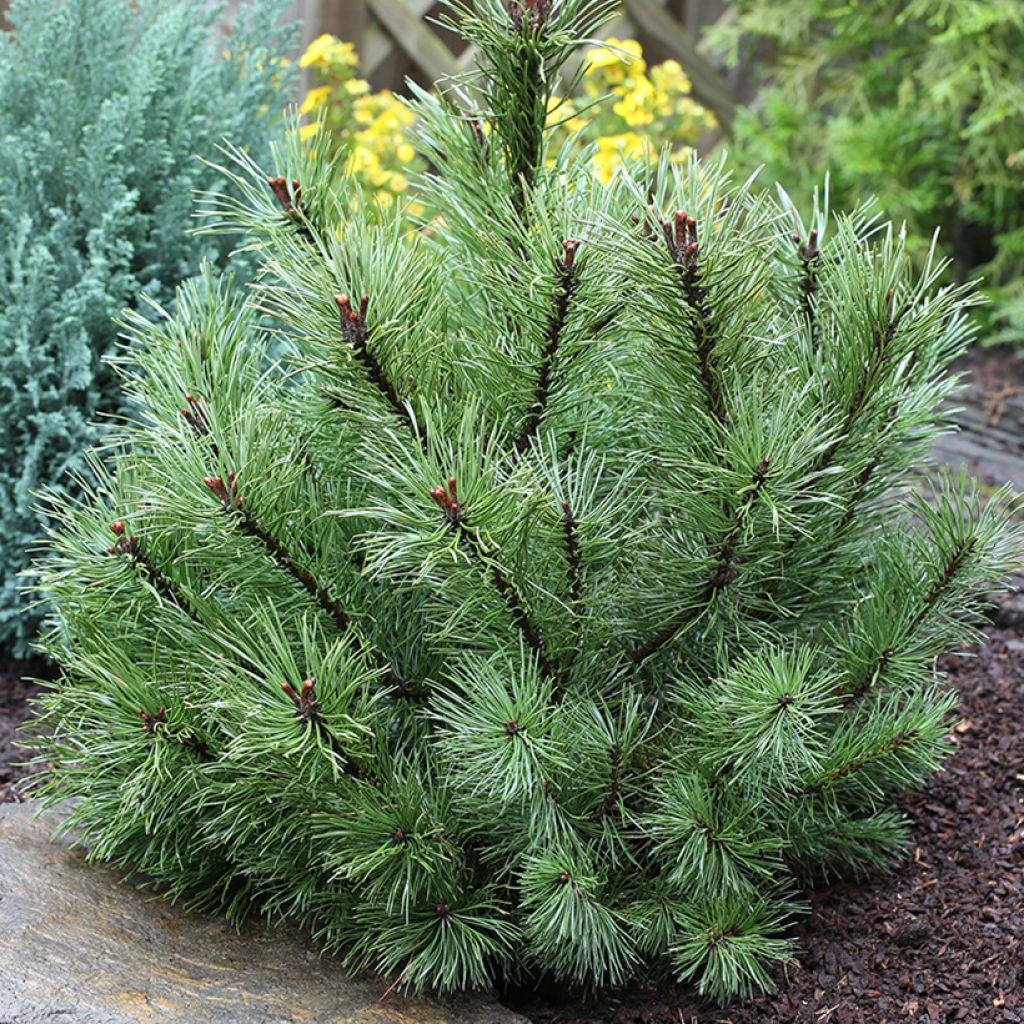

Pin à crochets ou Pin de Briançon - Pinus uncinata
Pinus mugo subsp. uncinata - Dwarf Mountain Pine
Pinus uncinata
Dwarf Mountain Pine, Mountain Pine
Special offer!
Receive a €20 voucher for any order over €90 (excluding delivery costs, credit notes, and plastic-free options)!
1- Add your favorite plants to your cart.
2- Once you have reached €90, confirm your order (you can even choose the delivery date!).
3- As soon as your order is shipped, you will receive an email containing your voucher code, valid for 3 months (90 days).
Your voucher is unique and can only be used once, for any order with a minimum value of €20, excluding delivery costs.
Can be combined with other current offers, non-divisible and non-refundable.
Home or relay delivery (depending on size and destination)
Schedule delivery date,
and select date in basket
This plant carries a 24 months recovery warranty
More information
We guarantee the quality of our plants for a full growing cycle, and will replace at our expense any plant that fails to recover under normal climatic and planting conditions.
Would this plant suit my garden?
Set up your Plantfit profile →
Description
The Hooked Pine or Briançon Pine, in Latin Pinus uncinata, is a montane conifer of medium size and slow growth, recognizable by its generally asymmetrical habit. Its conical to pyramidal silhouette and rather narrow crown are characteristic and give it a wild appearance, well suited to a large natural garden. Its dense vegetation is made up of fairly stiff dark green needles, evergreen in winter. Very undemanding, this pine accepts most soils and extremely harsh living conditions. Plant preferably in isolation, in a sunny location.
Pinus uncinata, considered by some botanists as a subspecies of Pinus mugo, is also known as Mountain Pine, Hooked Pine or Briançon Pine. It is a member of the Pine family, which includes many conifers present in our gardens or in nature, such as Spruces, Larches, Firs, Cedars, etc. It is a montane species, one of the oldest in Europe among Pines, surviving from the glacial era. In its natural state, it is mainly found in the Pyrenees, where it occupies an estimated cumulative area of 110,000 ha, particularly in the famous Cirque de Gavarnie. Populations also exist in the Alps, and to a lesser extent, in the Massif Central, Jura and to some extent in the Vosges. It is a high-altitude species that prefers to grow between 1600 and 2300m. At lower altitudes, it often coexists with Scots Pine, Pectinate Fir and Beech, although it tolerates little competition from other species. At high altitudes, it generally forms homogeneous stands, being one of the few that withstand the difficult living conditions prevailing there (wind, cold, snow, etc.). Briançon Pine is a slow-growing conifer, reaching up to 20m (66ft) in height, sometimes 25m (82ft) for very old specimens, with a very long lifespan (over 1500 years!). It has a relatively narrow habit, reaching 10 to 12m (33 to 39ft) in width, with a conical to pyramidal habit and a fairly dense crown, which allows it to withstand the weight of snow. Its frequently asymmetrical silhouette makes it easily recognizable. It forms a rather straight trunk, especially if it has space around it, with a diameter of 50 to 90cm (20 to 35in). The bark is usually dark grey to brown or almost black, rather dull. It flakes off in angular plates, thick at the base of the trunk. The branches are vigorous, glabrous, also dark in colour, often greyish black. The needles are grouped in pairs, occasionally in threes, and measure on average 4 to 5cm (2in) long. Fairly dark green, they are upright and stiff, arranged in brushes all around the branches. The male catkins, 10mm (1in) long, appear in June-July and are yellow or red. The female cones are purple turning dark brown when ripe and measure 3 to 6cm (1 to 2in). The cone scales bear small hooks that gave the species its name.
This pine demonstrates extreme adaptability, both in terms of soil and climatic conditions. It grows in limestone to acidic soil, even peaty soil, tolerating relatively dry as well as moist (but well-drained) soils. Resistant to temperatures as low as -30°C, it endures strong winds as well as snow without any damage (it grows on Mont Aigoual...). It just requires a sunny exposure, possibly semi-shaded in hot climates.
Briançon Pine finds its place from north to south, in gardens large enough to accommodate it. Its wild appearance testifies to its botanical origin, far from the frequent horticultural cultivars among ornamental conifers. It will appeal to nature lovers, associated with other native plants. Cornus mas 'Jolico', a Cornelian Cherry with a very similar appearance to the botanical species, will be a very good companion. The dark background of the Hooked Pine's foliage will highlight its very early yellow flowering as well as the reddish colour of its autumn foliage. The European Spindle (Euonymus europaeus) is also one of those shrubs with a natural silhouette, which is adorned with fabulous autumn colours, as well as extremely decorative pink and orange fruits.
Report an error about the product description
Plant habit
Foliage
Botanical data
Pinus
uncinata
Pinaceae
Dwarf Mountain Pine, Mountain Pine
Cultivar or hybrid
Other Pinus - Pine
View all →Planting and care
Pinus uncinata should be planted from September to November and from February to April in ordinary, moist to dry, even poor soil. This species accepts all types of soil, whether they are limestone or, conversely, peaty and acidic, or schistose. It also grows well on shallow soils as well as in wet areas, provided they are minimally draining. It is also very resistant to cold (down to practically -30°C (1°F)), snow, and strong winds.
Choose a sunny location or, at most, partially shaded in a warm climate. Soak the root ball in a bucket for fifteen minutes before planting. Optionally, add organic amendment to the planting hole (it tolerates very poor soils, but will still thrive better in more fertile soil) and water generously in the first years, and in case of prolonged drought. You can apply a special conifer fertilizer every year in April and cultivate the soil in summer. This very hardy conifer does not need to be pruned.
Planting period
Intended location
Care
This item has not been reviewed yet - be the first to leave a review about it.
Similar products
Haven't found what you were looking for?
Hardiness is the lowest winter temperature a plant can endure without suffering serious damage or even dying. However, hardiness is affected by location (a sheltered area, such as a patio), protection (winter cover) and soil type (hardiness is improved by well-drained soil).

Photo Sharing Terms & Conditions
In order to encourage gardeners to interact and share their experiences, Promesse de fleurs offers various media enabling content to be uploaded onto its Site - in particular via the ‘Photo sharing’ module.
The User agrees to refrain from:
- Posting any content that is illegal, prejudicial, insulting, racist, inciteful to hatred, revisionist, contrary to public decency, that infringes on privacy or on the privacy rights of third parties, in particular the publicity rights of persons and goods, intellectual property rights, or the right to privacy.
- Submitting content on behalf of a third party;
- Impersonate the identity of a third party and/or publish any personal information about a third party;
In general, the User undertakes to refrain from any unethical behaviour.
All Content (in particular text, comments, files, images, photos, videos, creative works, etc.), which may be subject to property or intellectual property rights, image or other private rights, shall remain the property of the User, subject to the limited rights granted by the terms of the licence granted by Promesse de fleurs as stated below. Users are at liberty to publish or not to publish such Content on the Site, notably via the ‘Photo Sharing’ facility, and accept that this Content shall be made public and freely accessible, notably on the Internet.
Users further acknowledge, undertake to have ,and guarantee that they hold all necessary rights and permissions to publish such material on the Site, in particular with regard to the legislation in force pertaining to any privacy, property, intellectual property, image, or contractual rights, or rights of any other nature. By publishing such Content on the Site, Users acknowledge accepting full liability as publishers of the Content within the meaning of the law, and grant Promesse de fleurs, free of charge, an inclusive, worldwide licence for the said Content for the entire duration of its publication, including all reproduction, representation, up/downloading, displaying, performing, transmission, and storage rights.
Users also grant permission for their name to be linked to the Content and accept that this link may not always be made available.
By engaging in posting material, Users consent to their Content becoming automatically accessible on the Internet, in particular on other sites and/or blogs and/or web pages of the Promesse de fleurs site, including in particular social pages and the Promesse de fleurs catalogue.
Users may secure the removal of entrusted content free of charge by issuing a simple request via our contact form.
The flowering period indicated on our website applies to countries and regions located in USDA zone 8 (France, the United Kingdom, Ireland, the Netherlands, etc.)
It will vary according to where you live:
- In zones 9 to 10 (Italy, Spain, Greece, etc.), flowering will occur about 2 to 4 weeks earlier.
- In zones 6 to 7 (Germany, Poland, Slovenia, and lower mountainous regions), flowering will be delayed by 2 to 3 weeks.
- In zone 5 (Central Europe, Scandinavia), blooming will be delayed by 3 to 5 weeks.
In temperate climates, pruning of spring-flowering shrubs (forsythia, spireas, etc.) should be done just after flowering.
Pruning of summer-flowering shrubs (Indian Lilac, Perovskia, etc.) can be done in winter or spring.
In cold regions as well as with frost-sensitive plants, avoid pruning too early when severe frosts may still occur.
The planting period indicated on our website applies to countries and regions located in USDA zone 8 (France, United Kingdom, Ireland, Netherlands).
It will vary according to where you live:
- In Mediterranean zones (Marseille, Madrid, Milan, etc.), autumn and winter are the best planting periods.
- In continental zones (Strasbourg, Munich, Vienna, etc.), delay planting by 2 to 3 weeks in spring and bring it forward by 2 to 4 weeks in autumn.
- In mountainous regions (the Alps, Pyrenees, Carpathians, etc.), it is best to plant in late spring (May-June) or late summer (August-September).
The harvesting period indicated on our website applies to countries and regions in USDA zone 8 (France, England, Ireland, the Netherlands).
In colder areas (Scandinavia, Poland, Austria...) fruit and vegetable harvests are likely to be delayed by 3-4 weeks.
In warmer areas (Italy, Spain, Greece, etc.), harvesting will probably take place earlier, depending on weather conditions.
The sowing periods indicated on our website apply to countries and regions within USDA Zone 8 (France, UK, Ireland, Netherlands).
In colder areas (Scandinavia, Poland, Austria...), delay any outdoor sowing by 3-4 weeks, or sow under glass.
In warmer climes (Italy, Spain, Greece, etc.), bring outdoor sowing forward by a few weeks.






























